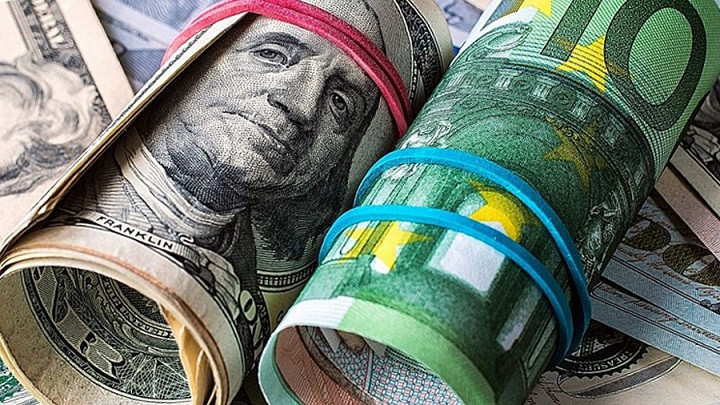
Analysts believe that the US and European currencies may begin to compete in the fall this week. If earlier, the downward trend was mainly the advantage of the euro, now the dollar is not safe from this. Experts believe that the decline of the EUR / USD pair is inevitable, but they expect a relatively small decline.
In the current situation, where the coronavirus COVID-19 is the conductor of the global economy, governments have little choice. And neither the United States nor Europe intends to sit back and watch the collapse of their economies. They are trying to mitigate the negative effects of the pandemic through cash injections or the issuance of special bonds ("corona bonds"). To date, this has not yielded positive results, but has been able to slightly slow down the movement of economies along an inclined one.
The downward trend along with the economies did not pass by the main world currencies - the dollar and the euro. Experts fear their further sliding towards the bottom. The EUR/USD pair opened the new week with a slight downward correction, which continued on Tuesday, April 14. The pair began with a strong increase to the level of 1.0945 in the morning, but it slowed down later. Currently, the EUR / USD pair is trading near 1.0938–1.0939, trying not to slide to critical values.
According to experts, we should expect some growth of the European currency to the psychologically important level of 1.1000 in the near future. This will be facilitated by a small subsidence of the dollar in a number of positions. According to analysts, reducing the cost of hedging can lead to cheaper dollars, which will entail a significant influx of foreign capital into the United States. Earlier, the cost of hedging USD for European and Japanese investors remained unnecessarily high, but now, the US authorities are ready to revise the previous standards.
Moreover, experts consider disappointing data on inflation and the labor market in America as another factor hindering the rise of the dollar. Last week, they provided significant support to the European currency. Analysts drew attention to the critical increase in the number of applications for unemployment benefits in the United States and a number of negative inflation indicators. It can be noted that the consumer price index slipped 0.4% mom in March 2020 after the February rise of 0.1% mom, while inflation growth slowed down significantly (from the previous 2.3% yoy to 1.5 % g / g). The data turned out to be worse than market expectations, increasing the potential for further weakening of the US currency.
Nevertheless, analysts are confident that the US currency will remain on top and will be able to maintain its gained position, despite the drawdown caused by the economic collapse due to the COVID-19 pandemic and the growing number of cases. The only significant problem can be low retail sales and industrial production in the US over the past month. This information will be published on Wednesday, April 15. Thus, experts are at a low start to expectations of another decline in these indicators. According to preliminary estimates, retail sales in America will decline by 6.5-7.0% in monthly terms. Experts are sure that this will be a record collapse. As for the industrial production indicator, it runs the risk of declining by 1.5% on an annualized basis and 3.8–4.2% on a monthly basis.
Experts also emphasize that there is a direct correlation between the decline in these indicators and the fall of the American currency. The more these indicators lose, the more the dollar becomes cheaper. The European currency is also balancing on the edge, trying not to lose its gained position. As a result, economists have questions: to what extent can the US and eurozone economies contract? How resistant will they be to the negative effects of the pandemic? According to analysts, if the pace of decline is relatively similar, then the euro and dollar will remain in the same position. In the event of an incline and, as a consequence, a sharp contraction of any of the economies, one of the leading world currencies will suffer more than the other and will begin to become cheaper.
Many experts predict a hard decline for the EUR/USD pair, believing that it cannot escape the bearish trend. It must be survived with the least loss, and then recovery is not far away. According to analysts, positive trends will begin to appear in the medium and long-term, while the dollar will strengthen its position earlier than the euro.





















